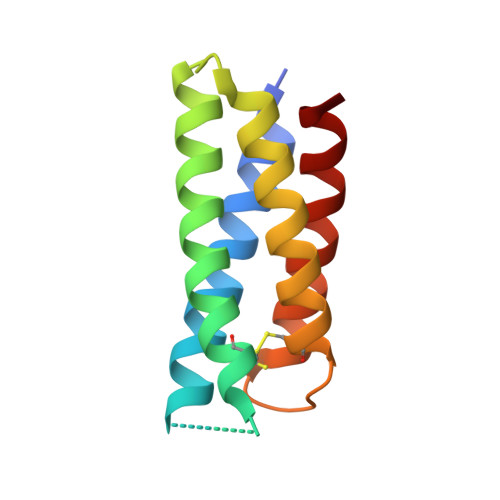Bacterial cytosolic proteins with a high capacity for Cu(I) that protect against copper toxicity.
Vita, N., Landolfi, G., Basle, A., Platsaki, S., Lee, J., Waldron, K.J., Dennison, C.(2016) Sci Rep 6: 39065-39065
- PubMed: 27991525
- DOI: https://doi.org/10.1038/srep39065
- Primary Citation of Related Structures:
5FIG - PubMed Abstract:
Bacteria are thought to avoid using the essential metal ion copper in their cytosol due to its toxicity. Herein we characterize Csp3, the cytosolic member of a new family of bacterial copper storage proteins from Methylosinus trichosporium OB3b and Bacillus subtilis. These tetrameric proteins possess a large number of Cys residues that point into the cores of their four-helix bundle monomers. The Csp3 tetramers can bind a maximum of approximately 80 Cu(I) ions, mainly via thiolate groups, with average affinities in the (1-2) × 10 17 M -1 range. Cu(I) removal from these Csp3s by higher affinity potential physiological partners and small-molecule ligands is very slow, which is unexpected for a metal-storage protein. In vivo data demonstrate that Csp3s prevent toxicity caused by the presence of excess copper. Furthermore, bacteria expressing Csp3 accumulate copper and are able to safely maintain large quantities of this metal ion in their cytosol. This suggests a requirement for storing copper in this compartment of Csp3-producing bacteria.
Organizational Affiliation:
Institute for Cell and Molecular Biosciences, Medical School, Newcastle University, Newcastle upon Tyne NE2 4HH, UK.














